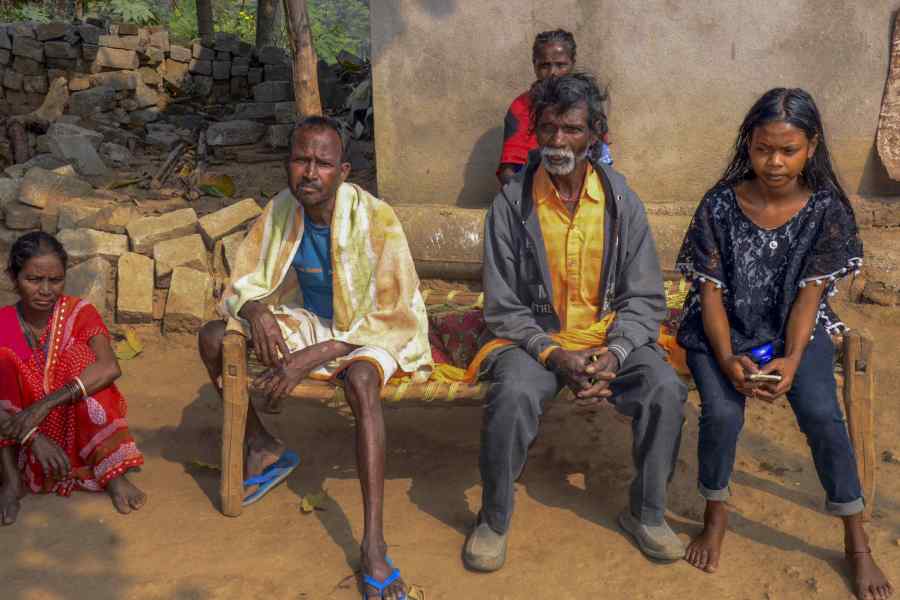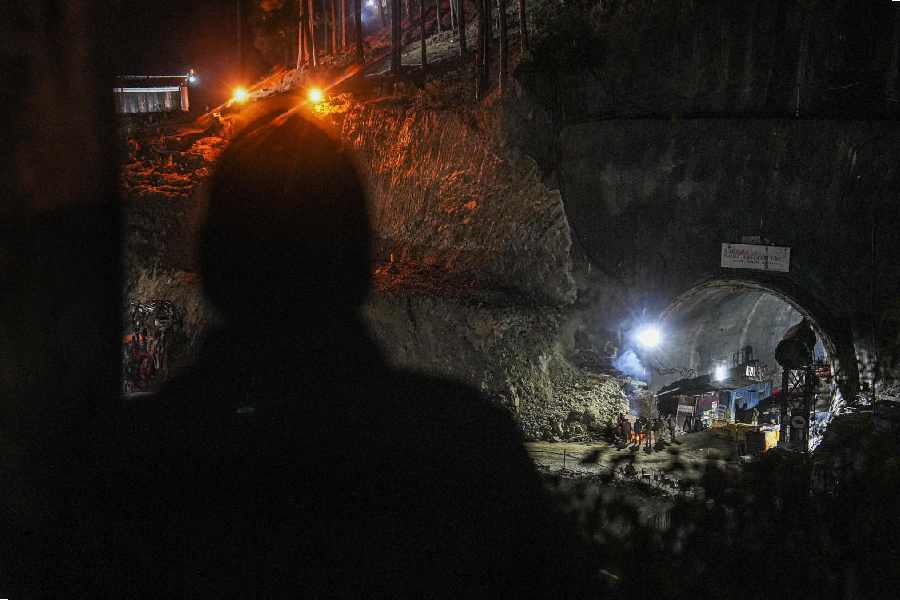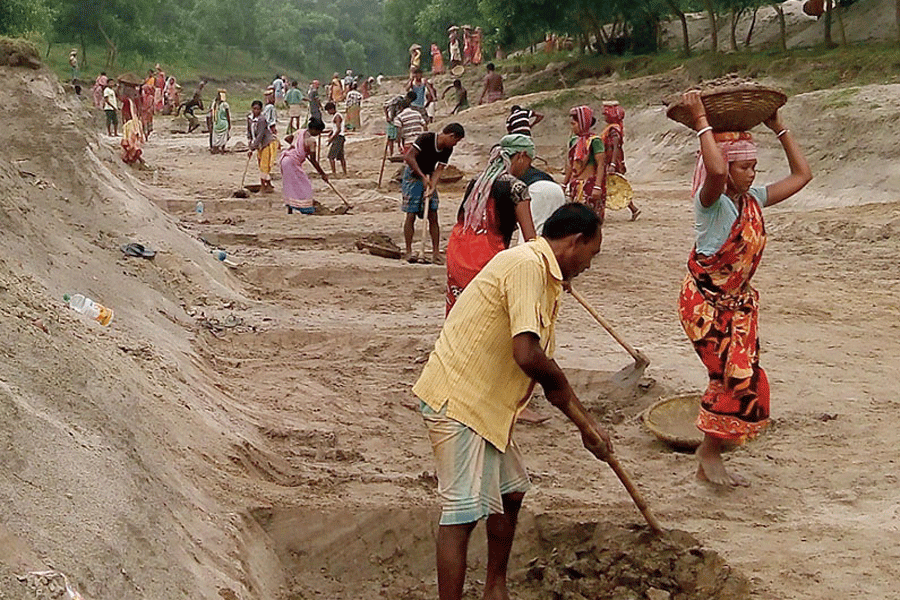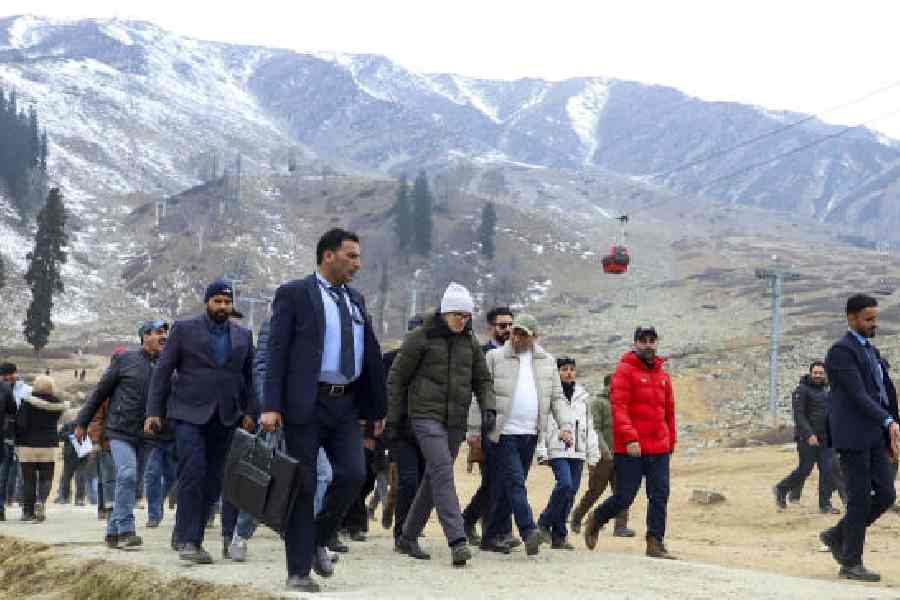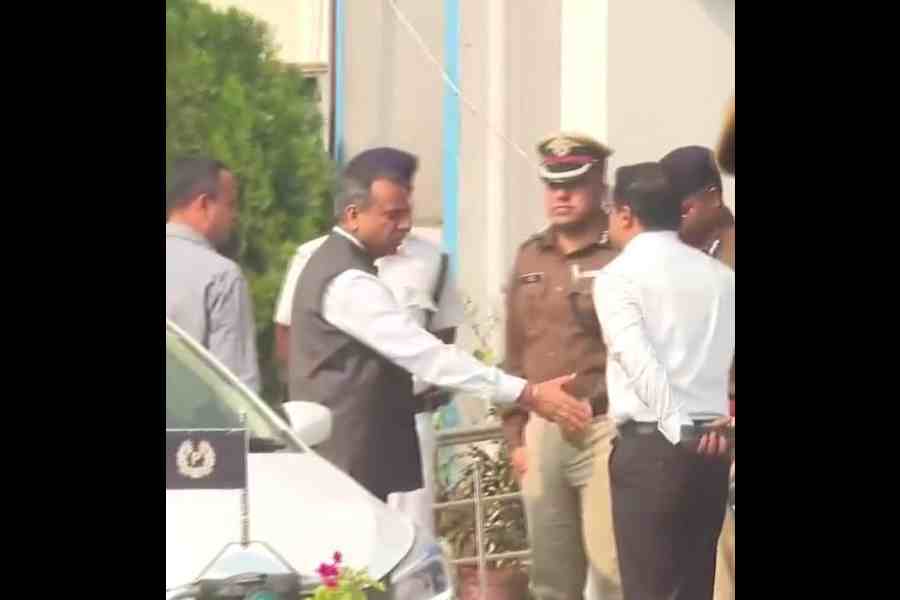Several unanticipated challenges stalled the effort on Friday to rescue the 41 workers trapped in the tunnel in Uttarkashi, now separated from freedom by only 10 metres of soil, rock and construction material.
The Telegraph has put together answers to possible questions about the rescue effort, based on information from the officials and engineers engaged in the effort, and tunnel experts.
Q: Having reached within 12m of access to the workers, why did the rescue effort slow down?
A: The auger machine had drilled through nearly 45m of the 57m-thick barrier of debris by Wednesday, stirring hopes of a rescue within hours. But several challenges temporarily stalled further progress.
The machine encountered a metallic object — a lattice girder rib used in tunnel construction. Gas cutters had to be used to remove this obstruction. Then a portion of a steel pipe being used to create the extraction channel was found to be bent, which would also have obstructed the auger machine operations. The steel pipe had to be cut.
The auger’s interactions with the bent part of the
steel pipe resulted in vibrations that weakened the base or platform being used for the auger machine. The platform had to be reset with quick-hardening cement, among other measures.
Q: Is it possible to estimate the time the rescue may take?
A: The auger machine has only 10 metres to go. If drilling remains smooth and unencumbered, the machine could drill through that stretch within four to six hours. But officials on Friday — the 13th day of the rescue effort — declined to specify a timeline for the workers’ extraction.
Engineers familiar with the rescue effort and officials asserted that the workers have food, water and medicines, and are being made as comfortable as possible in their circumstances.
One official said: “If, for any reason, this is (prolonged) by three, four or seven… days, they should have the stamina to cope with that.”
Q: Friday marks the 13th day of the rescue operations. Isn’t this unusually long?
A: Not necessarily, say experts, given the challenges that the rescue effort has faced. “The progress of an auger machine depends on the type and nature of the debris it encounters,” said Ashish Juneja, professor of geotechnical engineering at IIT Bombay and an expert in tunnel engineering.
“An auger machine typically takes three to five days to drill 60m vertically downward. In this case, the machine is moving horizontally and obstacles in the debris appear to have slowed progress.”
Q: What if, for some reason, this channel of extraction fails? Is there an alternative route?
A: Yes, authorities have identified four alternative routes, including one to access the workers through vertical drilling into the tunnel from the top.
“But such a vertical approach would require drilling through nearly 100m of soil and rock — and could be more challenging than the current (approximately) 60m horizontal approach,” said Sanjay Rana, a geophysicist and director of Parsan, a private company in New Delhi that helped with measurements to identify possible routes for vertical drilling, if required.
The equipment for the four alternative routes are on their way to the site, Lt Gen. Syed Ata Hasnain, a member of the National Disaster Management Authority (NDMA), said on Friday.
Q: How will the workers be actually brought out through the channel?
A: If the horizontal channel is successfully created, the workers will be brought out one by one on wheeled stretchers. The National Disaster Response Force on Friday conducted a rehearsal, a PTI report said, during which an NDRF employee lay face down on the stretcher as it went a short distance into the passage.
Q: Which agencies are currently involved in the rescue operation?
A: A mix of government departments, public sector organisations, and private companies. The Prime Minister’s Office, Union home ministry, National Disaster Management Authority, Union road transport and highways ministry, National Highways and Infrastructure Development Corporation, and the Oil and Natural Gas Organisation are among the public sector organisations involved.
Among private companies, Parsan employees are on the site assisting with ground-penetrating radar and other equipment to guide the drilling process, while Trenchless Engineering has provided the auger machine.
Q: Given the prolonged rescue effort, would it be reasonable to suggest that it did not fully or scientifically anticipate what it would require? Couldn’t, for instance, have the metallic object been detected in advance using ground-penetrating radars?
A: Two engineers familiar with the challenges the drilling effort has encountered say there is no evidence yet of any obvious lapses, although only a detailed scrutiny of the timeline of responses and actions can help answer that question.
“An auger machine can in principle drill like a knife goes through soft butter — but not if it encounters debris it can’t handle,” Juneja said.
The ground-penetrating radar arrived at the site on November 16, by when the auger machine was already drilling through the rubble. “At that time, sending the radar would have required first pulling out the auger machine, which would have itself delayed progress,” Rana said.
However, the radar, which can help detect metallic objects up to a distance of 5m, will be used during the remaining stretch of drilling.

